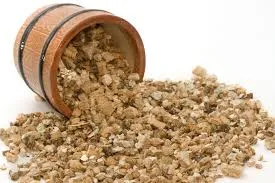Dec . 30, 2024 06:01 Back to list
Kaolin-Based Adsorbents for Environmental Remediation and Water Treatment Applications
The Versatility of Kaolin as an Adsorbent Material
Kaolin, a naturally occurring clay mineral, is primarily composed of kaolinite, along with other minerals like quartz and feldspar. Renowned for its various industrial applications, kaolin has gained significant attention as an effective adsorbent material. This article delves into the unique properties of kaolin, its adsorption mechanisms, and its diverse uses in environmental remediation and industrial processes.
Unique Properties of Kaolin
Kaolin possesses several intrinsic properties that render it suitable for adsorption applications. Its layered structure allows for a high surface area, which facilitates the attachment of various ions and molecules. Furthermore, its chemical stability, non-toxicity, and abundance make it an attractive choice compared to synthetic adsorbents. Kaolin’s surface can be modified by calcination or treatment with different chemicals to enhance its adsorptive capacity, making it even more versatile.
Adsorption Mechanisms
The effectiveness of kaolin as an adsorbent largely depends on physical and chemical adsorption mechanisms. Physical adsorption, or physisorption, involves weak Van der Waals forces, allowing reversible attachment of molecules. This type of adsorption typically occurs at lower temperatures and can accommodate a vast range of organic and inorganic pollutants.
On the other hand, chemical adsorption, or chemisorption, occurs when a strong chemical bond forms between the adsorbate and the adsorbent's surface. This process often requires specific functional groups and conditions, allowing for more selective adsorption. Kaolin’s surface can be modified through various treatments to introduce active sites for specific contaminants, improving its efficiency in purification processes.
Environmental Remediation
kaolin adsorbent

In the context of environmental issues, kaolin has demonstrated significant capabilities in water treatment applications. Its effectiveness in removing heavy metals such as lead (Pb), cadmium (Cd), and mercury (Hg) from aqueous solutions has been widely studied. Through adsorption processes, kaolin can trap these toxic metals, thereby reducing their concentration and mitigating environmental hazards.
Moreover, kaolin also serves as an efficient adsorbent for organic pollutants, such as dyes and pharmaceuticals. Industries often discharge wastewater containing harmful substances that pose risks to human health and the environment. Utilizing kaolin in treatment systems can enhance the removal of these contaminants, leading to safer water for communities.
Industrial Applications
Beyond environmental remediation, kaolin's role as an adsorbent extends to various industrial applications. In the paint and coating industries, it serves as a pigment and filler, promoting the consistent quality and durability of products. Kaolin can also absorb excess moisture, making it valuable in plastics and rubber production, where controlling humidity is crucial.
Additionally, kaolin’s use in removing impurities from industrial gases, like sulfur dioxide (SO₂) and nitrogen oxides (NOx), contributes to cleaner air quality. By integrating kaolin in filtration systems, industries can achieve compliance with environmental regulations while minimizing their ecological footprint.
Conclusion
In summary, kaolin is a multifunctional adsorbent that plays a crucial role across a range of applications. Its unique properties, coupled with effective adsorption capabilities, make it a cost-effective and eco-friendly alternative to synthetic adsorbents. As global awareness of environmental issues grows, utilizing kaolin for water treatment and pollution control will likely become increasingly important. Continued research and innovations in kaolin modification will undoubtedly enhance its utility, allowing it to meet the challenges of modern environmental and industrial demands. Thus, kaolin not only contributes to the sustainability of various industries but also represents a promising material for safeguarding our environment.
-
Fe-C Composite Pellets for BOF: Enhance Steelmaking Efficiency
NewsAug.07,2025
-
Eco-Friendly Granule Covering Agent | Dust & Caking Control
NewsAug.06,2025
-
Fe-C Composite Pellets for BOF: High-Efficiency & Cost-Saving
NewsAug.05,2025
-
Premium Tundish Covering Agents Exporters | High Purity
NewsAug.04,2025
-
Fe-C Composite Pellets for BOF | Efficient & Economical
NewsAug.03,2025
-
Top Tundish Covering Agent Exporters | Premium Quality Solutions
NewsAug.02,2025
